Spanish Response to CHamoru Depopulation
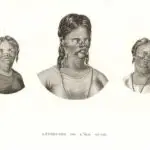
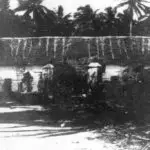
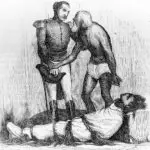
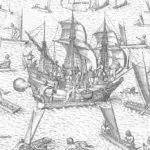
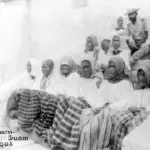
Table of Contents
Share This
Interpretive essay: CHamoru population decline
An important part of Guam’s Spanish-era history is the dramatic decline of the CHamoru population, particularly in the context of the Father Diego Luís de San Vitores’ watershed mission that began in 1668, and the nearly thirty years of subsequent resistance of the CHamorus, the indigenous peoples of Guam and the Marianas.
Richard Shell noted that CHamoru population estimates at that time range from San Vitores’ reported 100,000 CHamorus on Guam to a much lower estimate of 24,000 CHamorus. These disputed estimates are also affected by some conjectures that pre-1668 Spanish “contact events” may have already unleashed European diseases for which CHamorus had no natural immunities. As many as 100 ships may have passed through the Marianas before 1668 with several Europeans spending substantial amounts of time among the CHamorus before San Vitores’ arrival.
Resistance to Spanish colonization led to warfare
The question of whether warfare or disease was really to blame for this decline remains a somewhat contentious historical issue. Moving forward in this history is also the question of the eventual role of Spanish medicine, or at least Spanish provisions of health care among the CHamorus, until the American seizure of Guam in 1898 – an area that is poorly covered in available historical documentation.
Early histories of Guam such as A Complete History of Guam and Guam Past and Present, both published in 1964, tend to consider conflicts between CHamorus and a relatively small number of Spanish soldiers with superior armaments to be the main cause for this decline. Spanish Commander Josef de Quiroa y Losada is often given prominent culpability in his relentless pursuit of rebel leaders and punishment of supporting settlements.
More current historical works, that include a brief summary of Guam’s history before delving into some other Guam subject, sometimes also make this generalization. For example, Guam 1941 & 1944: Loss and Reconquest, published in 2004, as is the case with A Complete History of Guam, offer European diseases as a secondary cause.
While many historians place the martyrdom of San Vitores in 1672 as providing a significant impetus for Spanish aggression against CHamoru resisters, former Guam Congressman Ben Blaz also considers this event to have:
set in motion a course of events that would lead to the near extermination of the people whom he [San Vitores] had come to save for Christ.
English buccaneer William Ambrosia Cowley’s recording of having been given “leave” in 1684 by Governor Damián de Esplana to:
…kill [CHamorus] and take whatever we could find” represents documentation that bolsters an emphasis on Spanish violence for the population decline of the CHamoru people. Haddock (1973) also asserts that as the Spanish eventually quelled the CHamoru rebellion, “peace [was] established at the price of the extinction of a race.
According to a Spanish census, only 3,539 CHamorus (the exact number varies somewhat in publications) were alive in 1710. Francis Hezel, using a working hypothesis of 40,000 CHamorus existing in 1668, emphasizes the significant role of disease in drastically diminishing the CHamoru population and stresses the mistaken conjecture encapsulated in the obvious and almost fashionable acceptance of Spanish warfare as constituting genocide against the CHamoru people.
Such an interpretation, Hezel argues, characterized by an understandable anti-colonial bias, provides for no better history than do those of a former age when historians functioned as apologists for the European powers.
Diseases affect CHamorus
As historical interpretations of Guam’s Spanish early era progressed in the literature, more attention was given to the conjectured, more significant role of introduced and sustained diseases in this depopulation. Writing in the introduction to the most significant time-based account of the San Vitores mission (Francisco García’s The Life and Martyrdom of the Venerable Father Diego Luis de San Vitores of the Society of Jesus . . .), Hezel also emphasizes that:
mounting evidence shows that it was the scourge of disease and epidemic rather than the notoriously inaccurate arquebuses of the small rag-tag company of Spanish and Filipino troops that led to depopulation.
Hezel further argues that in fact, the CHamoru population was incontestably reduced to a mere fraction of what it had been just before the arrival of the first missionaries, although this does nothing to reduce the death toll and the consequences of the forced relocation of CHamorus from other Mariana islands to church-centered villages on Guam.
Jane Underwood considers 1521 to 1668 to have been a period of population stability. She offers a table of widely different population estimates for all the Mariana Islands as well as separately for Guam, Rota, Tinian and Saipan from several sources. The tables also outline populations during the “period of population decline and contraction” from 1669 to 1786, with scattered numbers for each of these islands derived from numerous sources. Numerous other tables provide population numbers up to 1897, a year before the American seizure of Guam, and there afterwards to 1950.
By 1786, a period of the “reintegration of ‘Neo-CHamoru’ culture and population recovery” began. Shell stresses the impact not only of this forced herding of CHamorus, particularly following the defeat of a remaining group of rebels on the small island of Aguijan in 1695, but also the overall weight of the Spanish subjugation through arms and subsequent Spanish control as expressed by Spanish Governor Luís de Ibáñez y García (1871 to 1873):
In the beginning, the yoke of our arms weighed so heavily that when they were unable to cast it from their shoulders, they preferred to end their lives in desperation by hanging or other means. The women intentionally sterilized themselves or flung their children into the sea because they were convinced that an early death would redeem them from a toilsome and distressing life.
While stressing the probable far-reaching impact of epidemics in 1683 and 1690, Underwood stresses the serious impact of a small pox epidemic in either 1699 or 1700 as well as CHamoru deaths from hunger in 1706. Shell references Stephen J. Kunitz’ contention that:
Social disruption [represented historically in part by these forced migrations to Guam villages] is at least as significant in causing high mortality as is the virulence of the infectious agent itself.
The apparent near or even complete disappearance of CHamoru males from this somewhat contentiously interpreted period (the idea of which naturally supports a more warfare-leaned interpretation) had long-term demographic consequences – not only in subsequent interracial genetic make-up but also in the continued decline of the CHamoru population even after 1742.
The forced migrations of CHamorus from eight northern Mariana Islands (collectively known as ‘Gani’) also led to a significant lost of life at sea probably as much as geographic and cultural dislocation. Some historians, however, assert that a severe decline of the CHamoru people on Guam made these migrations actually necessary. The forced migration of CHamorus into church-centered villages is known as the reduccion.
According to Marjorie Driver this forced movement, orchestrated by Governor José Madrazo, led to the loss of about 3,000 CHamorus. Other scholars such as K. R. Howe (who wrote Where the Waves Fall: A New South Sea Islands History from First Settlement to Colonial Rule in 1984) emphasize that the concentration of CHamorus in church-centered villages on Guam was a primary Spanish means of controlling CHamorus and particularly so after 1695.
In order to prevent CHamorus from escaping Guam, the Spanish also destroyed CHamoru proas (canoes) leading, along with significant losses in the male population, to the general demise of the proa-building and sailing heritage – a heritage symbolic of CHamoru cultural history and central to current cultural movements of expression and revival.
Spanish reports also emphasized the intermarriage of Spanish “whites” with CHamoru women and the resulting “mestizos race.” Alfred Marche also noted a related decline in “pure blooded indigenes” which while standing at 1,111 in 1797 (and expanding to 2,683 by 1825), ceased to exist after 1830.
The decline of the CHamoru population was still evident in Governor Henrique de Olavide y Michelena’s 1753 census with only 2,714 “inhabitants” on Guam and only 1,711 CHamorus explicitly referred to in a 1758 census – a drop of approximately 1,242 CHamorus from a 1749 census. No explanation was apparently made for this drop. Rodrique Lévesque’s Volume 14 of the History of Micronesia compilation also includes the full census for 1758 when the combined population Guam and Rota was at its “lowest point” in the ‘post-contact’ history of the Mariana Islands: 1,700 people.
According to Michael Levin however, the CHamoru population reached its lowest point in 1786 although the mestizo population in censuses increased at the same time. Although Guam’s population had recovered to 8,207 by 1856, a devastating smallpox epidemic in that year killed over half of these people (down to 3,644) and essentially closing down the central village of Pago until it was briefly used in the early 1890s for a “leper” colony.
Former Naval Governor Leonard M. Cox claimed to have known survivors of the 1856 epidemic who were still alive at the time of his 1926 book “The Island of Guam.” While the epidemic may have significantly lowered the “leper” population on Guam, Governor Felipe María de la Corte (1855-1866) endeavored to encourage immigration to Guam in an attempt to make up for the loss. Corte even seriously considered trying to mix Carolinians with Chinese so as to create a race that he believed would be less susceptible to disease.
Little medical intervention given
One might assume that given these tumultuous periods of decline, epidemics, and death, the historical record would be brimming with accounts of Spanish attempts at medical intervention. The paucity of the historical record, however, suggests otherwise.
Perhaps one could attribute this lack of medical intervention to Guam’s geographic isolation from European areas of control – particularly relevant is the Spanish colonial regime in the Philippines – and the limitations of 18th- and 19th-century medical knowledge and poor record keeping that might have shrouded actually efforts on the ground. However, the detailed discussions of administrative problems, evaluations, and recommendations in reports by former governors and officials periodically commissioned by Spanish authorities in Manila give short shrift, if any at all, to health problems of the CHamorus.
Occasional mention is made of Jesuit priests being able to concentrate their efforts on the care of CHamorus once they were concentrated into six church-centered villages on Guam (Hagåtña, Hågat, Humåtak, Malesso’, Inalåhan and Pago). But because most of these reports occur after the Spanish reduccion and severe population declines, many references to these periods would have to be historical in nature although for some of these reports, the devastating smallpox epidemic of 1856 had yet to hit Guam.
Physicians were scarce
The historical record shows a few scattered references to the presence of physicians or at least individuals – trained or not – attempting to address health issues to some degree. Indeed, according to Robert Haddock, the first Spanish medical officer may not have arrived on Guam until 1873. The historical record otherwise has primarily marginal references to medical care.
These include the requirement that all those suffering from el mal de Lázaro (leprosy) arrive at the governor’s Presidio on 12 January 1803 to be examined by “Juan Manibusan and José Bermejo” and Irishman William George’s offering of his experience (apparently untrained) as a “medical practitioner” in 1849 and 1850 onboard the whaling frigate Richmond for “lepers” at the men’s “hospital on Saipan and the women’s at Adelup (Guam). George found that many did not have leprosy but were rather suffering from “scrofulous ulcers,” particularly from syphilis.
Don Farrell asserts that before the American seizure and subsequent rule of Guam, one Spanish doctor, generally without medicines, treated the entire population of Guam. Spanish army physician José Romero Aguilar allegedly did nothing when he arrived during a whooping cough epidemic that occurred during the governing conflict immediately following US Captain Henry Glass’ seizure of Guam.
Between September 1898 and January 1899 more than 100 children died from the whooping cough in Hagåtña alone. And although not seriously studied until after World War II when American doctors became aware of it, Governor Felipe María de la Corte made a lone, precautionary connection in 1856 between the appearance of Amyotrophic laterial sclerosis-Parkinsonism-dementia (lytico bodig) and the CHamoru eating of the cycad seed. This seed has been a leading but unproven candidate for the mysterious origins of lytico bodig on Guam for several decades.
Lytico bodig can be traced as far back as 1815 in church records and death certificates. A commissioned 1844 report by Spanish Governor Gregorio de Santa María that mentions the state of health care on Guam is also relatively unique but indeed brief. He noted the presence on Guam of an Englishman who had served on a whaling ship as a “pilot and doctor.” He was allowed to stay on Guam in 1842 when he married and practiced his “profession” as a matter of necessity.
Santa María also noted the presence of a Tagalog practitioner who, however, did “not deserve credibility either” and a CHamoru “practitioner” about whom he does not provide any information.
Suruhåna provided medical care
Santa María also called attention to “the people who really practice medicine here” – women who pursued deeply embedded customs whose secretive herbal concoctions they reveal to no one. Santa María refers to them as “cirujanas” (suruhånu in CHamoru) or herb doctors. The suruhånu most likely took care of most of the health care needs of the CHamorus.
Given the extremes of population declines, epidemics and, eventually, population recoveries during the Spanish administrative era of Guam, the glaring lack of reference to health care in the historical record provides for one of the most under-analyzed aspects of Guam’s Spanish colonial history.
For further reading
Beardsley, Charles. Guam Past and Present. Tokyo: Charles E. Tuttle Company, 1964.
Blaz, Ben. Bisita Guam: A Special Place in the Sun. Fairfax: Evers Press, 1998.
Carano, Paul, and Pedro C. Sanchez. A Complete History of Guam. Rutland: Charles E. Tuttle, Co., 1964.
Cox, Leonard M. The Island of Guam. Washington, DC: Government Printing Office, 1926.
Driver, Marjorie G. Lepers in the Mariana Islands During the Spanish Administration: 1668 – 1898 & Addenda (1899-1949). Mangilao: Micronesian Area Research Center, University of Guam, 2007.
Farrell, Don A. The Pictorial History of Guam: The Americanization 1898-1918. 2nd ed. Tamuning: Micronesian Productions, 1986.
García, Francisco Olive y. The Mariana Islands, 1884-1887: Random Notes. 2nd ed. Translated and annotated by Marjorie G. Driver. Mangilao: Micronesian Area Research Center, University of Guam, 1984.
–––. The Life and Martyrdom of Diego Luis de San Vitores, S.J. Translated by Margaret M. Higgins, Felicia Plaza, and Juan M.H. Ledesma. Edited by James A. McDonough. MARC Monograph Series 3. Mangilao: Micronesian Area Research Center, University of Guam, 2004.
Haddock, Robert L. A History of Health on Guam. Hagåtña: Cruz Publications, 1973.
Hezel, Francis X., SJ. “From Conversion to Conquest: The Early Spanish Mission in the Marianas.” The Journal of Pacific History 17, no. 3 (1982): 115-37.
Howe, K. R. Where the Waves Fall: A New South Sea Islands History from First Settlement to Colonial Rule. Honolulu: University of Hawai’i Press, 1984.
Kunitz, Stephen J. Disease and Social Diversity: The European Impact on the Health of Non-Europeans. New York: Oxford University Press, 1994.
Lévesque, Rodrique. History of Micronesia: A Collection of Source Documents. Vol. 14, Full Census of the Marianas, 1746-1773. Québec: Lévesque Publications, 1999.
Levin, Michael J. “A Brief History of the Population of Guam from 1710 through 1897.” In Guam History: Perspectives. Volume Two. Edited by Lee D. Carter, William L. Wuerch, Rosa Roberto Carter. Mangilao: Richard F. Taitano Micronesian Area Research Center, University of Guam, 1997.
Marche, Antoine-Alfred. The Mariana Islands. Translated by Sylvia E. Cheng and edited by Robert D. Craig. Mangilao: Richard F. Taitano Micronesian Area Research Center, University of Guam, 1982.
McMakin, Patrick D. “The Suruhanos: Traditional Curers on the Island of Guam.” Micronesica 14, no. 1 (1978): 13-67.
Nelson, Evelyn Gibson, and Frederick J. Nelson. The Island of Guam: Description and History from a 1934 Perspective. Washington, DC: Ana Publications, 1992.
Prasad, Usha K., and Leonard T. Kurland. “Arrival of New Diseases on Guam: Lines of Evidence Suggesting the Post-Spanish Origins of Amyotrophic Lateral Sclerosis and Parkinson’s Dementia.” Journal of Pacific History 32, no. 2 (1997): 217-228.
Rottman, Gordon L. Guam 1941 & 1944: Loss and Reconquest. Oxford: Osprey Publishing, 2004.
Shell, Richard J. Saved from Extinction: Changes in Guam’s Population, 1700 to Mid-Century. MARC Working Paper #73. Mangilao: Richard F. Taitano Micronesian Area Research Center, University of Guam, 1997.
Underwood, Jane H. “Population History of Guam: Context of Microevolution.” Micronesica 9, no. 1 (1973): 11-44.
